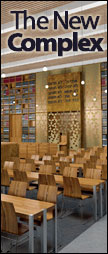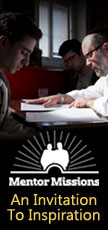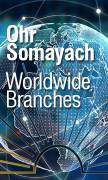Shemini: Dancing Away
When King David finally brought the Ark of the Covenant to Jerusalem, there was much fanfare and celebration. The entire city rejoiced, sacrifices were offered, and the shofar was blown. And King David himself danced at the joyous occasion with all his might. He was even criticized by his wife Michal for degrading his royal position by openly dancing and revealing himself like an uncouth simpleton (II Sam. 6:12–23). In this pericope, the Bible uses two different verbs to denote the king “dancing” at the Ark’s arrival: first, it states that King David was micharker (II Sam. 6:14), but then when it says that Michal was watching him from the window, it says that King David was mifazez and micharker (II Sam. 6:16). When this story is related again in the Book of Chronicles, a different verb is used to denote King David “dancing” — miraked (I Chron. 15:29). In this essay, we will explore these three Biblical Hebrew synonyms for “dancing,” and of course, will trace their etymologies and discover cognate words along the way.
Let’s start with miraked, as rikud is the most common Hebrew term for “dancing.” Its root REISH-KUF-DALET occurs nine times in the Bible, not only to describe people dancing, but also in reference to calves (Ps. 29:6) and goats (Isa. 13:21) dancing. Likewise, it is used in Hallel when relating that the “mountains danced like rams” (Ps. 114:4, 114:6) in joyous celebration of the Jews exiting Egypt. The term rikod also appears in the Bible when King Solomon famously wrote that there is an appropriate time for everything, including “a time to eulogize and a time to dance [rikod]” (Ecc. 3:4).
In Mishnaic Hebrew, the term miraked appears when codifying the ban on “dancing” on Shabbat (Beitzah 5:2) and when describing the pious men “dancing” at the Simchat Beit HaShoevah in the Temple (Sukkah 5:4). Additionally, the verb miraked (Shabbat 7:2) appears in reference to the forbidden labor of “sifting” on Shabbat, possibly because shaking a sifter from side to side resemble the motions of one dancing from side to side (see also Sheviit 5:9, Gittin 5:9, and Menachot 11:3).
Interestingly, the Jerusalemic Talmud (Beitzah 5:2) defines rikud in reference to the ban on “dancing” on Shabbat as a form of "jumping" whereby one leaves one foot on the ground (as opposed to kefitzah, by which one jumps with both feet in the air). Fascinatingly, Rabbi Aharon Marcus explains that at the core of the three-letter root REISH-KUF-DALET lie the letters REISH (whose principal meaning is "movement") and KUF (whose principal meaning is "fixed/entrenched”). This fits with the Jerusalemic Talmud’s understanding of the word rikud, as one foot is subject to movement (REISH), while the other foot remains grounded (KUF).
The Talmud uses the word rikud in three very interesting contexts: In one teaching, the Satan is said to “dance” between the horns of a black ox emerging from a marsh during the month of Nissan (Brachot 33a, Pesachim 112b), whatever exactly that means. In another passage, the rabbis at the beginning of the Second Temple period noticed that the Evil Inclination (yetzer hara) towards idolatry is “still dancing among us,” which is what inspired them to beg Hashem to rid them of that wretched desire (Yoma 69b, Sanhedrin 64a). Finally, the Angel of Death told Rabbi Yehoshua ben Levi that a man should not stand amongst a group of women when they return from a funeral because he (meaning, the Angel of death) dances and arrives before them. All three of these passages may be referring to the same ideas, as the Talmud (Bava Batra 16a) famously stated that the Satan, the Evil Inclination, and the Angel of Death are one and the same. Perhaps this “dancing” refers to these forces of evil becoming “happy” when they fulfill their God-given mission to cause man to stumble and suffer the consequences of their sins.
Indeed, Rabbi Moshe Tedeschi-Ashkenazi in Otzar Nirdafim writes that rekidah refers specifically to “dancing” out of happiness. Meaning rekidah connotes the joyous mood or cause for the act of “dancing,” while it seems that the other two words we will discuss describe specific acts of “dancing” themselves. He also presents a fascinating theory that sees the triliteral root REISH-KUF-DALET as primarily deriving from the biliteral root KUF-DALET meaning "burning." The way he explains it, "dancing" entails a flame-like movement whereby one jumps up to reach higher and then return to one's place, just like a raging fire is always reaching higher to spread the inferno.
Earlier, we mentioned the Psalmist using the term rekidah in reference to the mountains dancing. But there is another verse in Psalms that refers to the mountains dancing that uses a slightly different term: “Why are the Gavnunim Mountains dancing?” (Ps. 68:17). In this passage, the verb that means “dancing” is tiratzdun, derived from the triliteral root REISH-TZADI-DALET, which appears nowhere else in the Bible. Menachem Ibn Saruk and Radak both use the term rekidah to define this word (see also Megillah 29a). Indeed, Rabbi Tedeschi-Ashkenazi sees this root as a morphological variant of the aforementioned triliteral root REISH-KUF-DALET, based on the presumed interchangeability of the consecutive letters TZADI and KUF. He points to the near-synonymity of the words tzalui (“roasted”) and kalui (“burnt/toasted”) as another example of such interchangeability.
Let’s now turn to the verb micharker (whose theoretical noun form should be kirkur) used to describe King David dancing before the Ark. That term seemingly derives from the quadriliteral root KAF-REISH-KAF-REISH which only appears twice in the Bible — both in the context of King David dancing before the Ark.
Rabbi Shlomo Pappenheim traces this word to the biliteral root KAF-REISH, whose central meaning he sees as "digging." Among the many words he sees as deriving from this biliteral root, Rabbi Pappenheim lists the word kar (“fertile field”), which refers to a space whose borders were typically delineated by "digging" trenches or ditches around the perimeter. As a corollary of this, karim refers to “fat animals,” i.e., those creatures who would typically pasture on the greens of a kar. In light of this, Rabbi Pappenheim submits that micharker refers to the movement of those healthy animals living on relatively the free-range kar. This is because such the animals appear to “dance” in their happy state. [For more about this two-letter root in Rabbi Pappenheim’s etymological framework, see “Digging Deeper” (Jan. 2022).]
Rabbi Tedeschi-Ashkenazi takes a different approach, preferring to parse the root KAF-REISH-KAF-REISH as a compound root comprising of kar (KAF-REISH) and rach ("soft/young, REISH-KAF, i.e., the same two letters in reverse order). He explains that young karim tend to have excess energy that causes them to jump up and down more than usual. He also speculates that the Hebrew verb micharker is related to the Latin circulus (from whence the English word circle derives) in reference to the way that young calves and sheep would often move in “circular” motions, rather than in straight lines. Because of this, micharker means “dancing,” which likewise usually refers to a circular motion. Indeed, Rabbi Yosef Kara (to II Sam. 6:16) uses an inflection of sivuv (“around”) to define micharker. [See also Shadal (to Gen. 11:9, 13:10) who writes that kikar (“circle”) derives from kikur in the same way that Bavel (“Babylon”) derives from bilbul (“confusion”).]
As we mentioned in a previous essay (“Go Camel,” Dec. 2024), the word kar (KAF-REISH) can also refer to a camel’s saddle, as well as to a young camel — an animal especially known for its swiftness and agility. Based on this, Rabbi Tanchum HaYerushalmi (in HaMadrich HaMaspik, his lexicon of Rabbinic Hebrew) writes that because a camel walks in a way that looks like it is dancing, the very word for “dancing” is derived from a word for “camel.” But the truth is that Ibn Janach and Radak (in their respective Sefer HaShorashim) write the exact opposite: fast-moving animals are called kar or kirkarim because their movement resembles the movements of one who is "dancing." That same explanation is also offered by Rabbeinu Avraham ben Shlomo (to II Sam. 6:16).
Our final synonym for “dancing” — mifazez —derives from the root PEH-ZAYIN-(ZAYIN). As we will see below, that root can also refer to “gold,” and to the act of “spreading/strengthening.” In the context of King David “dancing” before the Ark, Targum (to II Sam. 6:16) renders the Hebrew mifazez as miraked (which is some sort of Aramaicization of the Hebrew miraked). Likewise, Maimonides (Laws of Lulav 8:13) uses the term “mifazezin and micharkerin” to describe the “dancing” and merriments at the Simchat Beit HaShoevah in the Holy Temple on Sukkot. Yet interestingly, when he describes the sages and important scholars partaking in those festivities, Maimonides uses a different verb to denote them dancing — mirakedin (there 8:14).
Before we delve into how mifazez might differ from the other words we have been discussing, it is worthwhile to look into the etymology of this word and explore other declensions of the same root. Mr. Yehoshua Yaron in Mevo L’Midrash HaLashon connects mifazez with the biliteral root PEH-ZAYIN, which gives us the word paz (a type of “gold”). Just as the sparkle of shiny gold gives the impression as though the rays of light bouncing off it are dancing in all directions, so does mifazez refer to the act of “wildly dancing” in multiple directions. Indeed, Rabbi Shlomo Pappenheim in Cheshek Shlomo traces both of those terms to the biliteral PEH-ZAYIN, whose core meaning he defines as “quick movement” (both in the same of “dancing” and “shining”).
The English word pizzaz/pizazz ("sparkle," "showiness," "glamor") seems to have been coined in the 1930s and Oxford English Dictionary notes that this word is of unknown origin. I wonder if perhaps the word is based on the Hebrew mifazez...
Rabbi Yehuda Aryeh of Carpentras offers an explanation of mifazez that is somewhat reminiscent of Rabbi Tedeschi-Ashkenazi’s explanation of miraked: he sees paz as referring a type of gold that is metaphorically "above" (i.e., more valuable or esteemed) all other metals, which parallels the gestures of a person dancing whose movements are often in upwards, that is, towards the “above.” [For more about paz in reference to “gold” and other Hebrew words for “gold,” see “Where’s the Gold?” (May 2020).]
TheMetzudat David (II Sam. 6:16) writes mifazez refers to an especially quick way of dancing (a “fast dance”). Rabbi Zev Atlas points out that even though when reporting about King David dancing before the Ark, the Bible does not write that King David was mifazez (II Sam. 6:14), when describing Michal seeing King David dance, it uses the word mifazez because the mifazez element of King David's dance — his careless, wild prancing — was what truly irked her. This connotation of hastiness in the word mifazez is also used by the Talmud (Shabbat 55b) in explicating Jacob’s critique of Reuben (Gen. 49:4). It was also used by a Sadducee who denigrated the Jewish People by calling them an ama paziza, “a hasty nation” (Ketubot 112a, Shabbat 88a) who verbally agreed to accept the Torah before their ears even heard what the Torah is about (see Ex. 24:7).
When Jacob offered blessings to his sons right before his death, he said about Joseph "vayafozu the arms of his hands” (Gen. 49:24). Radak (to Gen. 39:24) explains that this means that Joseph “strengthened” his arm to be able to mete out payback to those who hated him. Radak further writes (there and in his Sefer HaShorashim) that mifazez in the context of King David likewise refers to the king “strengthening” himself, as it is the manner of people who dance to strengthen their trousers or belt when they dance with all their might. Coming off of this later explanation, Rabbi Tanchum HaYerushalmi explains that the term vayafozu said about Joseph indicates that he “strengthened” himself in order to defeat his Evil Inclination and not accede the advances of Potiphar’s wife who tried seducing him to sin.
Rabbi Moshe Tedeschi-Ashkenazi in Ho’il Moshe (to II Sam. 6:16) writes that PEH-ZAYIN-ZAYIN is related to PEH-TZADI-TZADI ("explode,” "spread") in the sense that one dancing away seems as though he has "exploded" when he appears in different places in quick succession. He also suggests that perhaps fine gold is called paz because when it is beaten into a thin sheet, little piece of gold go flying about, as though the material was “exploding.”
In differentiating between two apparent synonyms for “dancing,” Rashbam (to gen. 49:24) writes that mifazez refers to the movements of the hands, while micharker refers to the movements of the feet. Rabbi Tanchum HaYerushalmi similarly explains that mifazez does not just refer of "dancing" in the sense of bopping around with one’s body (like miraked does). Rather, mifazez also denotes the concurrent movement of the hands and fingers in a way that is sync with the movements of one's feet, and it also denotes snapping with one's fingers in a way that produces a rhythmic sound that fits the tempo of the dance and/or the songs being sung (see also Bamidbar Rabbah §4:20 which seems to explain mifazez when said about King David as referring to the rhythmic jingling sound of his golden clothes produced by him swaying in dance).






